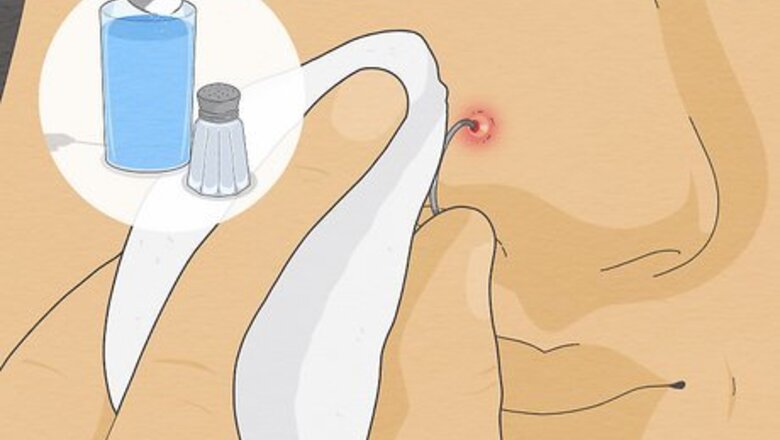
views
- Clean your infected piercing 3-4 times a day with a sea salt solution and gently pat it dry.
- Soak a clean cloth in warm water and hold it on the piercing for 20 to 30 minutes to increase blood flow and speed up the healing process. A chamomile tea bag is also soothing.
- Dab aloe vera gel around the piercing for immediate relief from pain, swelling, and inflammation.
- See your doctor if you have severe pain or a fever so they can prescribe an antibiotic to clear the infection.
Home Remedies
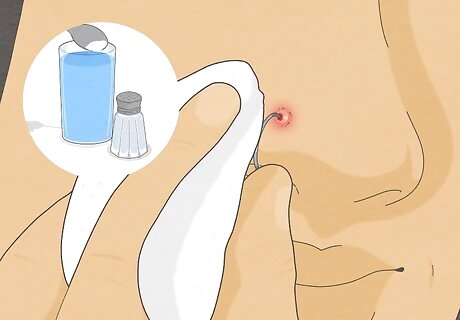
Sea salt solution Mix 1 teaspoon (about 1.5 grams) of sea salt in 1 cup (0.24 liters) of warm water, stirring it until the salt dissolves. Dip a clean cloth, cotton ball, or cotton swab in the solution and use it to gently wipe around the piercing to clean it. Do this 3-4 times a day if you suspect your piercing is infected. The sea salt solution also softens any crust around the piercing so it won't hurt to remove it. When you wash the piercing, gently wipe away the crust with a clean paper towel. Use sea salt or non-iodized salt. The chemicals in iodized table salt don't dissolve completely and could further irritate your skin.

Ice Cold helps reduce swelling. Put some crushed ice in a plastic bag, wrap the whole thing in a hand towel or washcloth, and hold it gently to the piercing. Leave it there for no longer than 15-20 minutes. As long as you have swelling, do this as often as once every 4 hours. Ice is only going to be beneficial for the first day or two after the infection starts, when you might have swelling. If there's no swelling, switch to warm compresses.
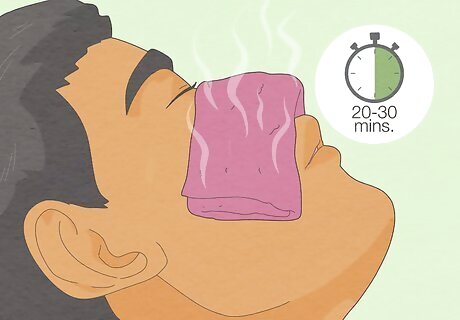
Warm compress Heat reduces pain and increases blood flow, which can speed up the healing process. Soak a clean hand towel or washcloth in warm water, then apply that directly to the piercing. Leave it on for 20-30 minutes. If you get relief from this, feel free to continue doing it as often as once every 2 hours.
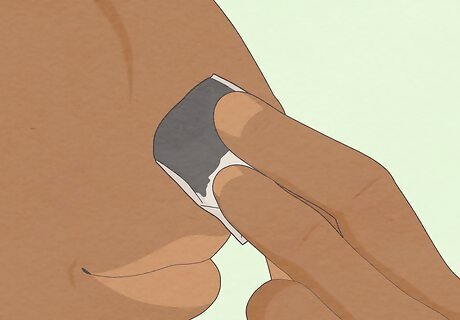
Chamomile compress Piercers recommend chamomile to soothe an irritated piercing. Simply boil water, then dip a chamomile tea bag in the water until the tea is completely soaked. Rest the tea bag on your piercing until it cools. When the tea bag cools, feel free to repeat the process again. This is a gentle treatment you can keep doing as often as you like. Use the same tea bag multiple times. When it starts to feel like you're not getting the same benefit, go ahead and start with a fresh one.

Aloe vera gel Aloe vera gel has anti-inflammatory properties that will soothe the skin surrounding the piercing. Simply dab the gel on the inflamed skin—there's no need to wipe it off, just leave it on for sustained relief. Wash your piercing with salt water and pat it dry before applying aloe vera gel.
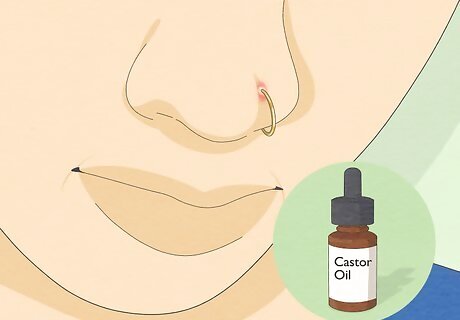
Castor oil Castor oil calms inflammation and can help clear infection. Simply wash your piercing with a saltwater solution and pat it dry, then dab castor oil on the inflamed skin with a cotton ball or the corner of a clean cloth. You don't have to dilute castor oil before applying it and it's safe to leave it on your skin indefinitely.

Topical antibiotics An over-the-counter antibiotic cream attacks your infection directly. Follow the instructions on the package for application. If you don't notice a difference in a couple of days, talk to your doctor about getting a prescription for a stronger antibiotic. Lotion or cream is best—don't use ointments because they block air circulation and will slow the overall healing process.
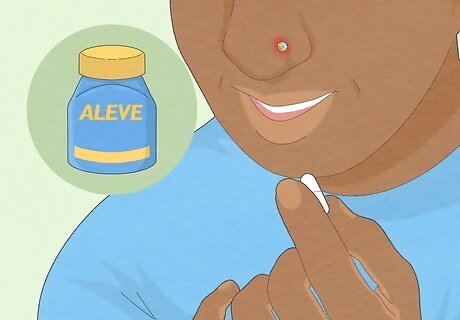
Over-the-counter anti-inflammatories Ibuprofen (Advil, Motrin) or naproxen (Aleve) can help reduce pain and swelling. They can also help reduce a fever. Follow the instructions on the package and don't exceed the maximum daily dosage. If you take an over-the-counter anti-inflammatory for 2-3 days and don't notice any reduction in your symptoms, talk to your doctor.
When to See a Doctor
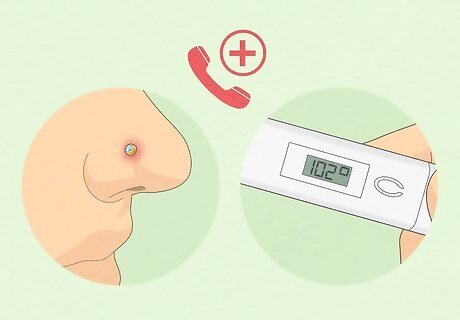
If you have severe pain or a high fever These symptoms indicate a severe infection that definitely requires antibiotics as soon as possible. Contact your doctor immediately and tell them how long you've had your symptoms. They'll likely examine your piercing and may ask you to take your piercing out. But leave it in unless your doctor tells you to take it out.

If the infection hasn't cleared after 5-7 days At-home remedies usually clear up a relatively minor infection. But if they aren't working, you probably need an antibiotic to get rid of the infection so your piercing will heal properly. Tell your doctor when and where you got pierced, when you first started noticing symptoms of infection, and what you've done to treat the infection. That'll help them better assess your condition so they can provide proper care.
Symptoms of Infection
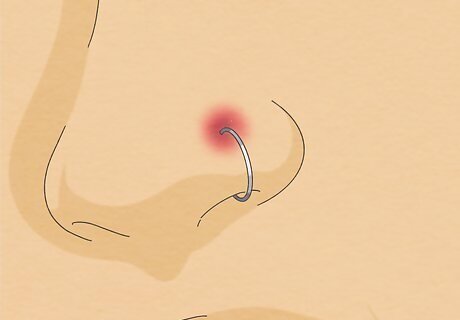
Redness around the piercing A little redness around the piercing is normal for the first few days. But if it stays red or if the redness expands or gets darker after a week, that's a sign that the surrounding tissue is inflamed. Redness by itself might not indicate an infection. Look for redness combined with any of the other symptoms of infection.
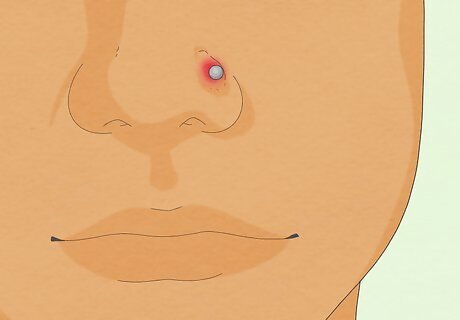
Swollen skin around the piercing Swelling, especially with redness and pain, is a tell-tale sign that your piercing is infected. If you're not sure that it's swollen, compare the pierced nostril with the other nostril.
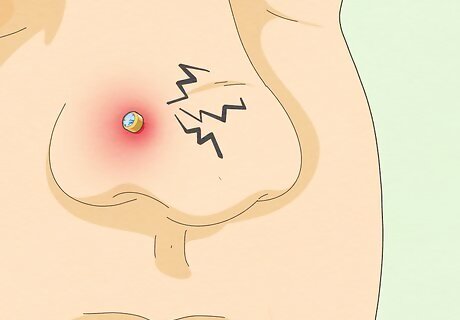
Throbbing pain or tenderness it's totally normal for your nose to feel a little tender for several after you get it pierced. But if that tenderness deepens into a more persistent pain that lasts more than a week, that's an indication that your piercing might be infected.
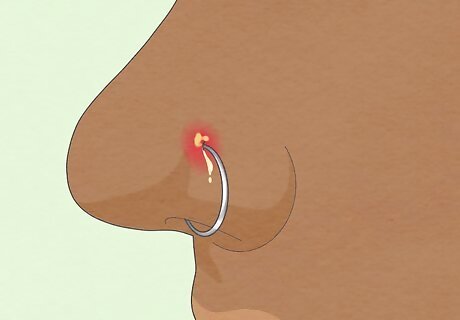
Yellow or green discharge from the piercing A little clear discharge is fairly normal immediately after the piercing. But yellow or green discharge is a sign of infection—especially if it's oozing out of the piercing site. Excessive crustiness goes along with this as the discharge dries. Don't try to rub or pick off the crusty bits while your skin is dry—the infection will spread more easily on damaged skin.
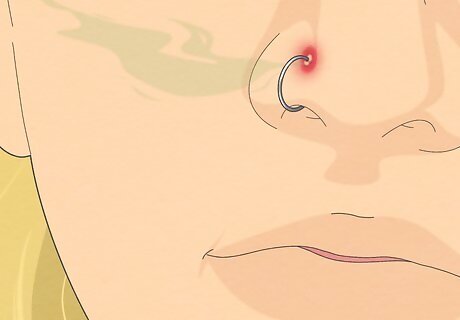
Abnormal odor This symptom typically goes along with the yellow or green discharge, since that's where the odor is coming from. Since the piercing is in your nose, the odor might be one of the first symptoms you notice.
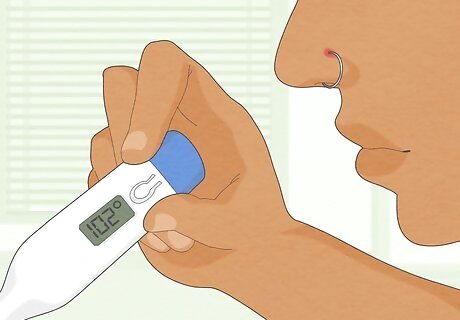
Fever You might feel chills, fever, or just generally under the weather. If the site of your piercing is inflamed and painful, that fever likely tells you that your body is battling an infection. Monitor your fever closely—if it doesn't go away on its own in a day or two, call your doctor.
Preventing Reinfection
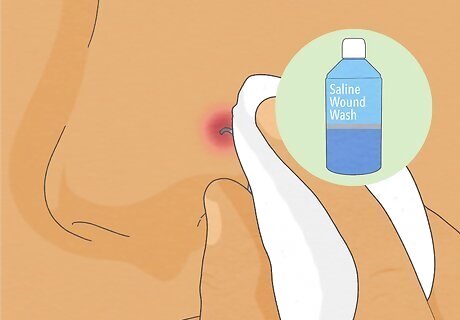
Clean the piercing twice a day to limit infection risks. Wash your hands, then gently clean the piercing area with soap and warm water. At a minimum, do this in the morning when you first wake up and then again at night before you go to bed. If you've been outside or you've been sweating, clean the piercing site again as soon as possible. If you don't want to use soap and water, a saline solution also works. Your piercer might have a specific saline solution or other cleaner that they recommend—if so, use that.

Avoid applying skincare products or makeup around the piercing. If you normally wear makeup, plan to go bare-faced for at least a month while your piercing is healing. Makeup harbors bacteria that can potentially infect your piercing. Avoid skincare products such as lotions, sunscreens, acne creams, face masks, exfoliators, and any facial cleansers that aren't fragrance-free. It's okay to continue to use some of these products on the rest of your face—just keep them away from your nose. This also means you need to be very careful when you're out in the sun. Wear a wide-brimmed hat to keep the sun off your face and nose since you can't wear sunscreen.
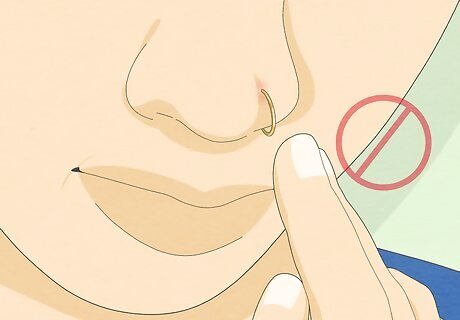
Keep your hands off the jewelry while the piercing is healing. Your hands and fingers are covered with bacteria (unless you've just washed them) that can cause another infection. Beyond that, twisting or pulling on the jewelry while your skin is dry can re-open the piercing site and make it take longer to heal. Think of it this way: the less you touch your piercing, the better. Spin your jewelry around a few times immediately after you've cleaned your piercing to loosen the crust around it and keep it free from your healing skin. But do this while your skin is still wet—otherwise, you might accidentally tear it.

Stay out of pools and bodies of fresh water. Both pools and bodies of freshwater harbor bacteria that can easily lead to another infection if it gets into your piercing before it's fully healed. Since the piercing is on your nose, you might be tempted to get in the pool and just not go under. But splashing and touching your face with wet hands could still reinfect the piercing, so it's best to stay dry. Keep in mind that it can take 4-6 weeks for a nose piercing to heal. If you had to battle an infection, though, you're looking at more like 6-8 weeks.














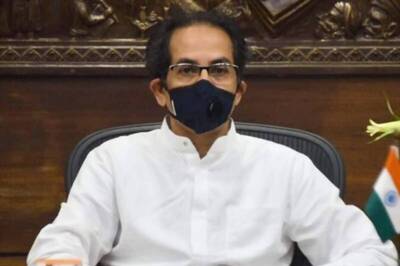



Comments
0 comment